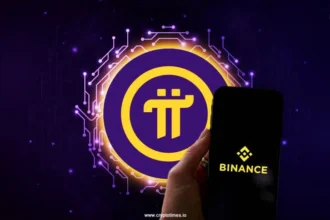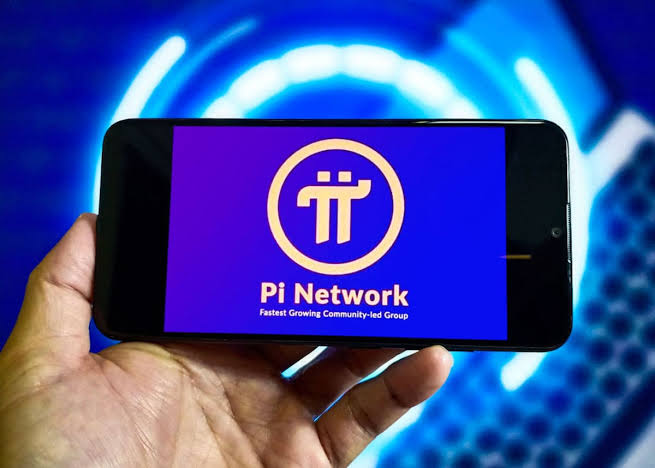Pi Network, introduced as a mobile-minable cryptocurrency in 2019, has captured the attention of millions worldwide due to its unique accessibility and low-barrier entry for users to earn cryptocurrency. With a user base growing into the millions, many early Pi “miners” are eager to understand the potential value of Pi once fully launched and listed on exchanges. However, as of now, Pi has not officially launched on any major cryptocurrency exchange, nor is it officially tradeable. Instead, the Pi community and speculators have turned to IOU markets to trade Pi tokens in anticipation of the official launch. This article explores the concept of IOU (I Owe You) markets, Pi Network’s IOU performance on various exchanges, and what this might mean for Pi’s future in the crypto space.
Understanding Pi Network’s Vision and the Concept of IOUs
Pi Network was designed to make cryptocurrency accessible to everyone by enabling users to “mine” Pi tokens on their mobile devices. Unlike Bitcoin or Ethereum, which require significant computational power, Pi’s protocol leverages a “social security circle” consensus mechanism. Users participate in the network by logging in daily and verifying others, creating a web of trust. While still in its beta phase, Pi has gained a large, engaged user base eager to see Pi launch on exchanges.
However, because Pi is not yet live on exchanges or fully released as a tradable token, the tokens are considered non-transferrable. This is where IOUs come into play. IOU (I Owe You) contracts are agreements that allow traders to speculate on the value of Pi by issuing “placeholder” tokens. These IOUs represent the expected value of Pi once it becomes tradeable but do not offer actual ownership of the Pi tokens. Simply put, buying Pi IOUs does not mean owning actual Pi tokens; rather, it is a way to speculate on Pi’s future price.
How Pi Network IOUs Work on Exchanges
Several cryptocurrency exchanges, particularly those with flexible listing policies, have begun offering Pi IOU markets. Traders on these platforms speculate on the future value of Pi by buying and selling IOUs, often in trading pairs like Pi/USDT. The IOU market acts like a derivatives market, allowing traders to speculate on the price movement of an asset they cannot yet own.
Here’s how it works
- Pricing Based on Anticipation: Since Pi tokens are not yet tradable, the IOU price is speculative. It reflects the market’s expectations of Pi’s future value once it becomes a fully tradable token.
- Risk and Volatility: IOUs carry significant risk because there is no official Pi trading, liquidity, or guaranteed redeemability. This can result in high volatility and large swings in price, driven mainly by sentiment and speculation.
- Non-Transferable Assets: IOUs do not represent actual Pi tokens and cannot be transferred to wallets. The IOU is essentially a “futures” contract that may or may not have value once Pi becomes live.
These IOU contracts allow speculators to position themselves in the market for potential gains (or losses) ahead of an official Pi launch.
Performance of Pi Network IOUs on Exchanges
The performance of Pi Network IOUs on exchanges has been characterized by extreme volatility and wide price fluctuations, reflecting the high level of uncertainty surrounding Pi’s actual value. Below are key aspects of Pi IOU performance on different exchanges:
a. Initial Price Surge and Demand
When Pi IOUs first became available, they experienced a surge in interest. Early adopters and speculators were eager to trade Pi IOUs, hoping to profit from the anticipated appreciation in value once Pi launched. Some exchanges saw Pi IOUs trading for $5 to $10 per IOU in the initial stages, a price fueled by optimism.
b. Market Correction and Volatility
After the initial excitement, Pi IOU prices began to fluctuate heavily. As speculation calmed and users realized the potential risks associated with IOUs, prices saw corrections. For instance, Pi IOU values have ranged widely, sometimes trading under $1, and then spiking up in reaction to news, announcements, or rumors related to Pi Network.
c. Influence of News and Market Sentiment
Pi Network’s IOU performance has been highly sensitive to news and community sentiment. The lack of clear guidance from the Pi Core Team about a firm launch date has created an environment where any update, speculation, or rumor can cause dramatic swings in IOU prices. For example, when Pi Network announced new developments, such as upgrades to its testnet or community milestones, Pi IOUs sometimes experienced temporary increases in value.
d. Comparison with Similar Projects
Pi Network IOUs can be compared to similar “pre-launch” tokens that were available through IOU markets before their official launch, such as Filecoin (FIL) or Uniswap (UNI) before they were officially listed. Filecoin, for instance, saw its IOU value fluctuate heavily until it launched, after which its price stabilized. This precedent might suggest that while Pi IOUs are volatile now, they may settle once Pi launches on exchanges.
Risks and Potential Rewards in Pi IOU Trading
Trading in Pi IOUs comes with considerable risk, as there is no guarantee of value or convertibility into actual Pi tokens. Here are some of the risks and potential rewards associated with Pi IOU trading:
Risks
- Lack of Convertibility: IOUs do not represent actual Pi tokens, and there is no guarantee they will be redeemable for real Pi tokens once Pi is officially launched.
- High Volatility: IOUs are highly speculative, leading to sharp price swings based on sentiment rather than actual value.
- Exchange Risks: Since IOUs are typically available on smaller, less-regulated exchanges, traders face risks associated with these platforms, such as low liquidity and potential for market manipulation.
Potential Rewards
- Speculative Gains: Traders who anticipate Pi’s success may benefit from buying IOUs at a lower price if the token’s official value is higher at launch.
- Early Positioning: For those confident in Pi Network’s vision, holding IOUs allows them to establish a position in anticipation of the token’s official listing.
Future Prospects and What It Means for Pi Network
The future performance of Pi Network IOUs depends largely on the Core Team’s development and launch timeline. The community is eagerly awaiting the transition to an open mainnet, at which point Pi could become available on major cryptocurrency exchanges, allowing holders to freely trade their Pi tokens. Here are some scenarios for Pi’s future:
- Positive Scenario: If Pi successfully transitions to the mainnet and launches on reputable exchanges, it could create a new wave of interest and drive up the price of actual Pi tokens. IOUs, in this case, may see their value converge with the official token, potentially benefiting those holding Pi IOUs.
- Negative Scenario: Should Pi face delays or fail to meet regulatory requirements, IOU markets may lose interest, and prices could collapse. A prolonged beta phase or failure to launch may cause IOUs to lose value entirely, representing a substantial risk to speculators.
- Stabilization Phase: After an official launch, Pi’s price may stabilize, similar to other cryptos. An official listing could reduce the speculative nature of IOUs, establishing Pi’s intrinsic value based on demand, usage, and market capitalization rather than speculation.
Community Sentiment and Final Thoughts
The strong community around Pi Network has shown resilience and optimism, sustaining interest in Pi IOUs despite the risks. Pi’s potential as a mobile-friendly, easily minable cryptocurrency with a robust community backing it has fueled speculation that it could disrupt the market upon launch.
However, Pi Network’s success will ultimately depend on its ability to deliver on its promises, including launching a secure mainnet and attracting real-world adoption. Until then, Pi IOU trading will likely remain a high-risk speculative activity. For those invested in the Pi ecosystem, managing expectations and understanding the speculative nature of IOUs is crucial.
In summary, Pi Network IOUs on exchanges serve as a window into how the market perceives the potential of Pi Network. These IOUs allow speculators and early adopters to anticipate the value of Pi tokens, but they come with substantial risk due to their unofficial nature and lack of convertibility. As the Pi Network progresses toward a mainnet launch, the fate of Pi IOUs and their alignment with the actual Pi token’s value will become clearer, ultimately reflecting the real demand for Pi in the cryptocurrency market. Continue Reading
















